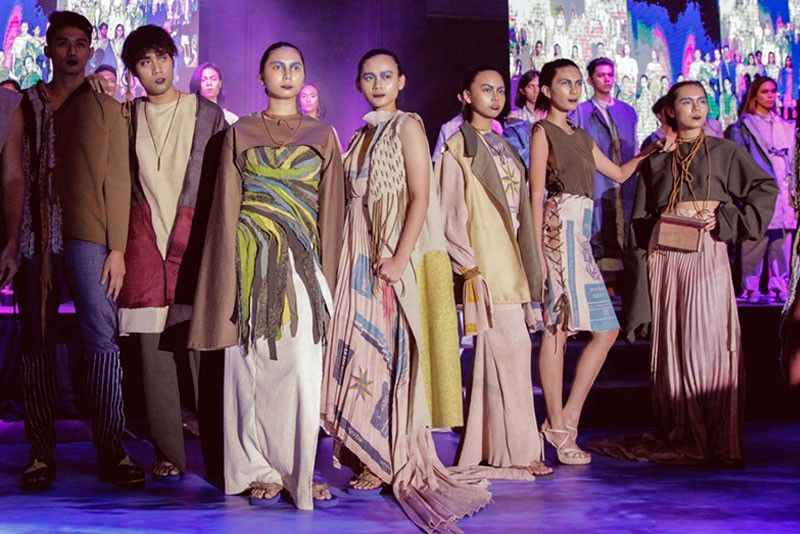Turning trash into trends

MANILA, Philippines - Fast fashion is more popular than ever. While this has made trendy clothes accessible to most, the true cost of producing clothes cheaply by the millions is borne on our planet. The waste produced by fast fashion is growing larger than we can imagine, and this is only one of many problems caused by the desire of brands to keep up with the latest trends.
This is why the Aboitiz Foundation started the Green Fashion Revolution, a fashion design competition that empowers students to reduce waste by designing clothes from what is otherwise considered trash, in an effort to create a waste-free fashion industry, and to encourage the youth to take an active part in saving the planet.
Now in its sixth year, the competition began in Cebu, and is now entering its second run in Manila. The competition invites students to create innovative yet wearable fashion using recycled materials, placing an emphasis on the importance of the “3Rs”: reduce, reuse and recycle. These materials range from flour sacks and tarpaulins gathered from Aboitiz’s companies, to scraps of fabric from textile shops and interior design firms.
This year, three schools participated in the competition: De La Salle-College of Saint Benilde, Asia Pacific College, and SoFA Design Institute. In addition to the challenge of using recycled materials, the students were given a theme: “Life Flourishing on Land and in Water” — an apt brief considering that three quarters of the earth is covered by water.
The creativity and ingenuity of the students were evident in the designs they presented on the runway. The competition’s big winner — scooping the awards for accessory, bag and shoe design — was SoFA. The GFR overall victor presented a collection that was inspired by mangroves, which live both in land and water. Titled “Pagbabago,” the collection utilized a number of techniques that really made use of the recycled materials. The students of SoFA transformed the flour sacks into electric-pleated skirts and dresses that flowed as if they were doused in a big vat of fabric softener. They also used discarded denim selvedge to create jeans that had textured stripes. Most impressive, however, was their use of fabric strips, hand-woven into panels that were intricate and vibrant, and added a delicate texture to the garments. These were contrasted with structured, ovoid sweaters and oversized coats made from scraps of upholstery fabric, providing a sort of protective shell to the delicate pieces.
The team from DLS-CSB presented a collection titled “Retaso” that was inspired by deep-sea creatures, and while it was nearly impossible to determine what these creatures were from their bizarre-sounding names, the collection was trendy and street-ready. Composed of mostly old jeans, the collection made a clear stance against waste: according to the students, out of an average of 10 pairs of jeans, only four to six are used regularly — not to mention the surplus produced by brands. The collection was a mix of slouchy jackets and tailored collared shirts, brought together by a deconstructed vibe with frayed hems and open seams in some garments. Save for some parts that were too deconstructed and a couple of non-functioning buttons and clasps, this was a collection that could easily be on the racks of a designer boutique.
Asia Pacific College, on the other hand, took a more traditional approach with their collection, titled “Abaddon.” Telling the story of man’s destruction of earth, the collection — made mostly from coffee-dyed flour sacks — was composed of marketable separates, some hand-stamped with fallen leaves. Although it was a small collection — featuring only six out of the required 10 looks — it told its story succinctly, the leaf prints disappearing gradually, representing the destruction of earth by man. And considering that APC doesn’t offer a fashion design course, the clothes were well-constructed, and did not look like the students took more than one try to get the clothing patterns right.
It’s not very often that students are empowered to create fashion with a purpose, let alone show their work on a runway. The Aboitiz Foundation is definitely leading the way to a more sustainable and eco-friendly fashion industry, in a way that’s exciting to the youth. And with the caliber of design shown by students from the three participating colleges, the future of local, green fashion looks bright.















